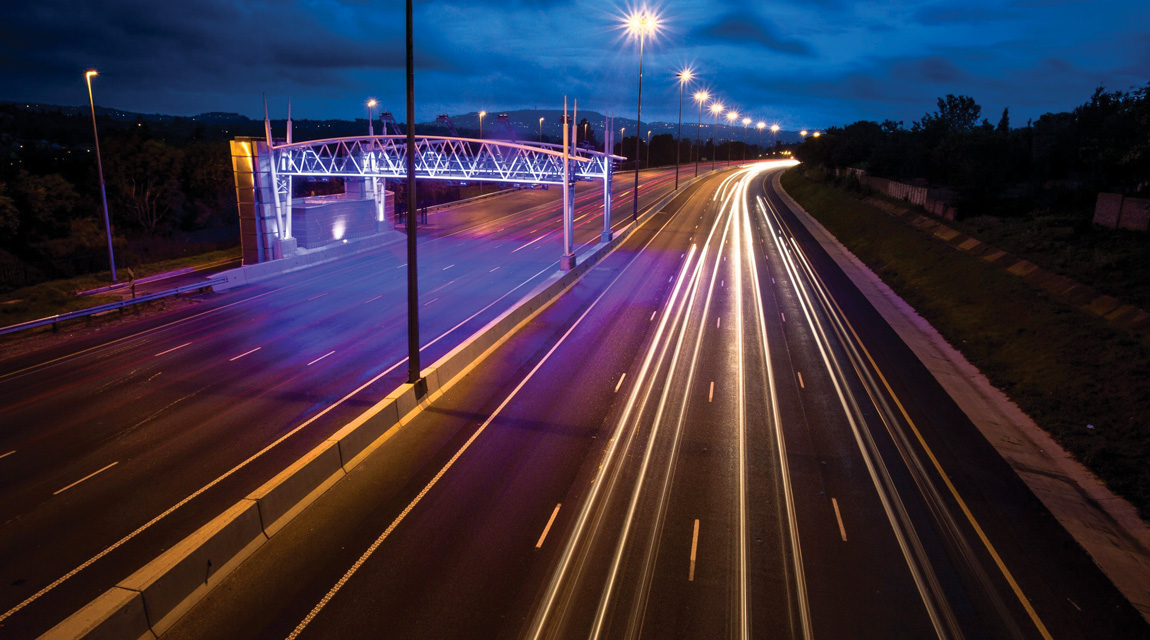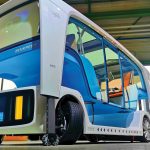The toll of tolls

Taking a different look at finance – Gareth Greathead finds out more about options for future funding of road infrastructure, which may directly impact on the pockets of all road users.
It is clear that many road users in Gauteng have not bought into the decision by the South African National Roads Agency (Sanral) to implement e-tolls as a means to build and maintain the province’s main arterial routes. Non-payment of tolls, and the cost associated with attempts to collect them have left Sanral R22 billion in the red and in danger of defaulting on its debts.
The agency’s failure has brought into question its ability to successfully raise funds in the future. In addition, it would appear that the ANC government has begun to distance itself from the agency and has called for the immediate disbandment of e-tolls in Gauteng ahead of next year’s national election.
Motorists may be happy with this development, but the question as to where the money will come from remains.
In July, we attended the Southern African Transport Conference where experts discussed some funding options for road infrastructure. Some alternatives to tolling include increasing taxes, which would allow for the fiscal collection of additional funds; the user-pays principle; the fuel levy; and a more diverse mix of funding methods.
All have merit, but are hampered in one form or another, including vulnerability to corruption, non-acceptance by the public, increasing the burden disproportionately and inadequacy in collecting funds.
Why we need road finding
The number of vehicles using the roads has doubled since 1994 and congestion is hampering growth of the economy. Good roads support economic development and lower the cost of transport. The indirect effects include increasing output, employment, efficient cities and innovation.
There are two basic options: build more roads, or reduce congestion by removing vehicles from the roads. The need for private ownership of vehicles could be eliminated through the implementation of a comprehensive, efficient public transport system.
Instead, government (through the Department of Transport) identified commercial vehicles as the problem and suggests removing them from the roads during peak periods. Rob Handfield-Jones from Driving.co.za, said: “This approach is not pragmatic, but concentrating on improving public transport could reduce the number of cars on the road by 60 percent, making the current infrastructure adequate for another 30 years.”
Stephan Krygsman, professor at the Stellenbosch University Department of Transport, said: “The absence of any adequate road infrastructure funding policy has created an atmosphere of absolute distrust and an unpleasant environment where everybody takes one another to court over e-tolls.
“No one can answer the basic questions such as: why we should pay, how much, to whom and how? With all that is going on we have to question if we have paid attention to the benefit of roads. I believe the public is reasonable, and if you show them what they are paying for they will pay for what they use.”

Why, or why not, toll
Handfield-Jones believes the rot began when e-tolling became the government’s default position. “All debate about alternative means of finance, or a mix of methods to finance road infrastructure, has been lost,” he said.
According to Handfield-Jones, the reason why the terms Sanral and e-tolling have become so unpopular is because of the agency’s continuous unlawful conduct. Sanral has been successfully taken to court and ruled against more than once.
It started with the N4 Mpumalanga corridor, in the case of the State versus Smith, where the construction of the highway was judged unlawful because of a lack of consultation, among other things.
Then there was the HMKL Investments versus Sanral and others judgement in 2011, where an e-toll gantry for the Gauteng Freeway Improvement Project (GFIP) was constructed in front of a revenue-bearing venue.
Later there was the N1/N2 Winelands ruling. “In this instance, it was never a case of the contractors discussing a variety of funding methods and coming up with the most appropriate method. It was a cash cow from the word go, and a defining loss for Sanral in court,” asserts Handfield-Jones.
Further complicating the Gauteng Freeway Improvement Programme (GFIP) is a lack of public buy-in, due to lack of consultation and idle threats. “The initial e-toll proposal received only 27 responses and, five years later, upon second publication, more than 12 000 responses were received.
“After it was implemented and Sanral was confronted with non-payment, it turned to threats. When threats are made by a government agency and not followed through, the agency loses the respect of the public,” noted Handfield-Jones.
It is not necessarily the e-tolls that are the problem, but Sanral’s execution thereof. People need to see what they are paying for and appreciate the value for any tolling project to be successful.
“Consider the Hugenot tunnel, where drivers have a choice to drive through the mountain or take the alternative route, which means navigating dangerous mountain passes with few barriers and sheer drops to the bottom. Toll routes should be shorter and make for easier driving where the cost can be justified and the value is obvious,” asserted Handfield-Jones.
Fiscal taxation
Handfield-Jones argued that tolling is the most expensive way to build roads and that for Sanral to spend R33 billion (more than the cost of the GFIP) to collect and chase e-toll offenders is a case in point.
He argued that fiscal taxation is the most cost-effective means of obtaining road infrastructure funding, but the option of increasing taxes to fund road infrastructure was taken off the cards by government and Sanral before it was even considered as an option.
“Sanral does not believe that the entire tax-paying population should be burdened by the cost of road infrastructure, despite the apparent overlap between vehicle ownership and the payment of taxes.
“Over and above that, planners made little effort to identify the fiscal benefit the improvement would bring in terms of additional tax revenue through growth in GDP. Since being built in the 1970s, Gauteng’s freeways have paid for themselves many times over,” Handfield-Jones said.
Electronic Toll Collection CEO, Coenie Vermaark, disagreed with the assumption that roads should be funded fiscally.
“As it stands, this country ranks twelfth in the world in terms of high taxes and still government is unable to address social disparity to an acceptable degree. The use of fiscally obtained funds for the building of road infrastructure will have the effect of widening disparity between the rich and the poor,” he commented.
Fuel levy
The fuel levy was initiated in South Africa in March 1935 when fuel cost only 30,5 cents a litre. At the time of writing, fuel costs nearly R16 a litre, with more than R3,50 of that going towards the fuel levy.
The fuel levy is favoured by many motorists, and is the fourth-largest tax in the country. Benefits of the fuel levy include its ease of collection, difficulty to evade and acceptance by the public. It’s also based on the theory of user pays and varies with size of vehicle as well as the speed and manner in which the vehicle travels.
However, according to Krygsman, there are problems with relying on the fuel levy, not least of which is the fact that it has only ten years of viability remaining. “Current research shows that the levy loses 1,1 percent efficiency annually with the development of more fuel-efficient vehicles, electric vehicles and altered driving habits.”
Vermaark asserted: “If government were to substitute tolls with the fuel levy it would need to increase between 42c and R1,10 per litre, making fuel even more expensive than it is now.
“Also, it is biased toward higher-income groups who benefit from more efficient vehicles, and all of the revenue received enters one pot. This means that rural areas pay the same amount as more developed regions, which receive more benefit.”
User pays
Under the user-pays principle, road users pay the full price of their consumption. In a survey conducted in the United States of America, where tolled roads outnumber those in South Africa, people opted for the user-pays option.
In this example, the road user must pay towards infrastructure cost, environmental cost in terms of pollution, accident costs and congestion charges. Each road user should pay only charges applicable to their use, but, unfortunately, this requires very accurate record keeping.
Krygsman believes in the user-pays principle: “The road belongs to the public, so they should be involved in the discussion. People want to understand what they are paying for. Corruption and bad dealings has led to a distrust of government and this model allows for greater participation by private companies managing the roads.
“This would, of course, require the establishment of an economic transport regulator to prevent abuse and monopolies,” he said.
It would seem the only viable solution would be a mix of financial funding methods. Still, with no template with which to work, due to a lack of policy from government when it comes to financing of road infrastructure, any agreement seems a long way off.
Published by
Focus on Transport
One Comment
Leave a comment Cancel reply
focusmagsa





“People want to understand what they are paying for. ” This is what I have been asking all along.
Nazir Alli made promises that because of e-tolls we would all be getting to work quicker and therefore be more productive, we would all get home quicker and be able to spend more time with our families, we would all be spending less on fuel due to less stop/start driving, we would all be paying less on vehicle maintenance and changing tyres less often.
Who out there is getting anywhere any quicker than they were in 2007 and can anyone show me their documented savings on vehicle running costs?
I keep hearing government ministers and Sanral representatives talking of world class infrastructure and wonderful roads but these roads are no better than we deserve considering the amount we contribute in taxes, vehicle licenses and fuel levies. And the reason people are loath to pay anymore is because the GFIP was superimposed on a 30 to 40 year old road network built by the “apartheid regime” and that has been paid for over and over again.